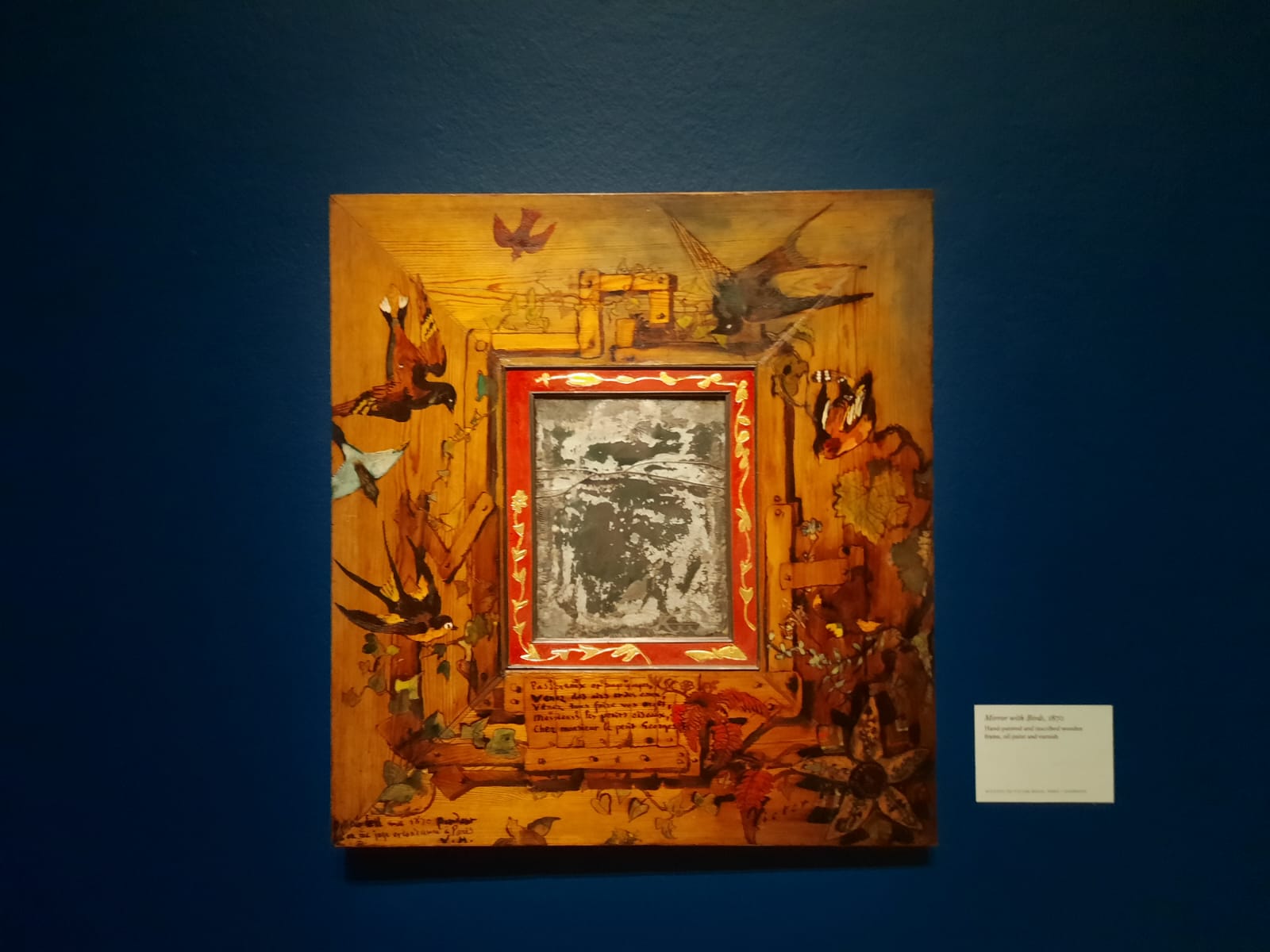Astonishing Things: The Drawings of Victor Hugo – Royal Academy, London
Astonishing Things: The Drawings of Victor Hugo is worth seeing not so much for the art itself, but for the way it rounds out Hugo as much more than just a famous author.
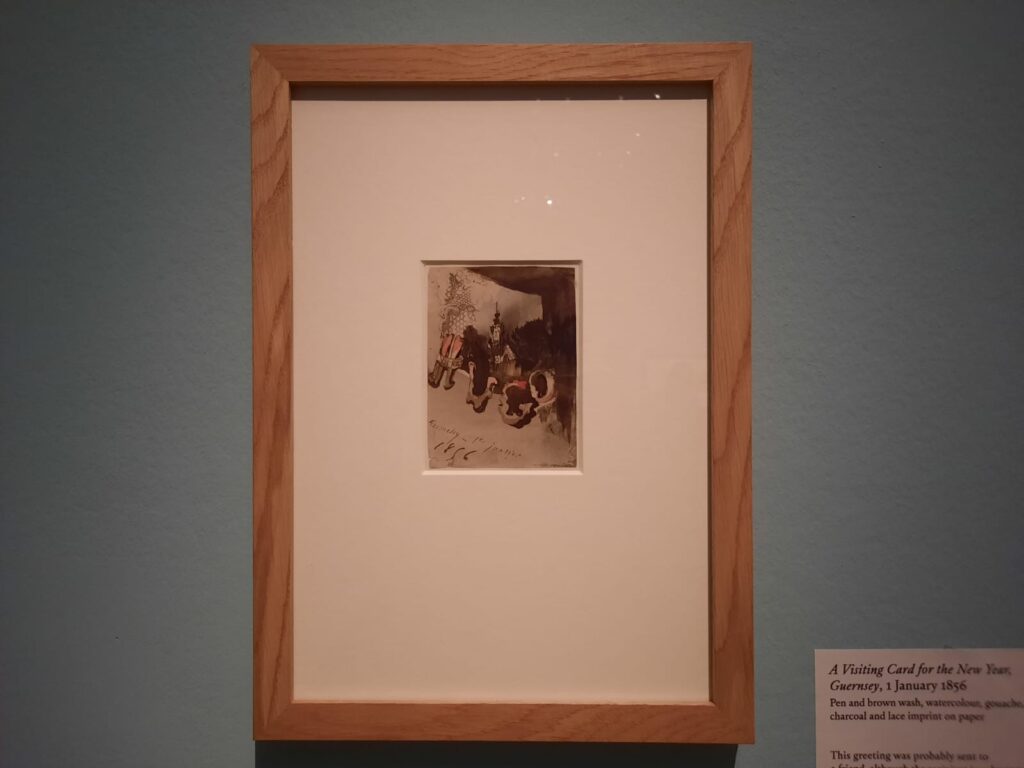
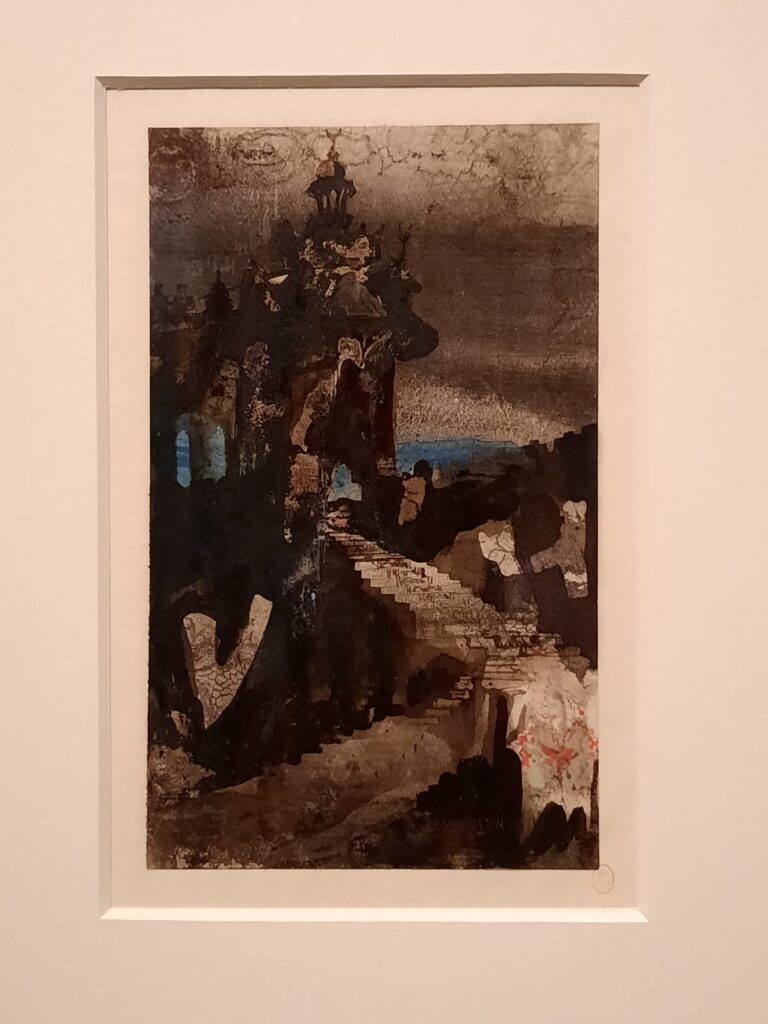
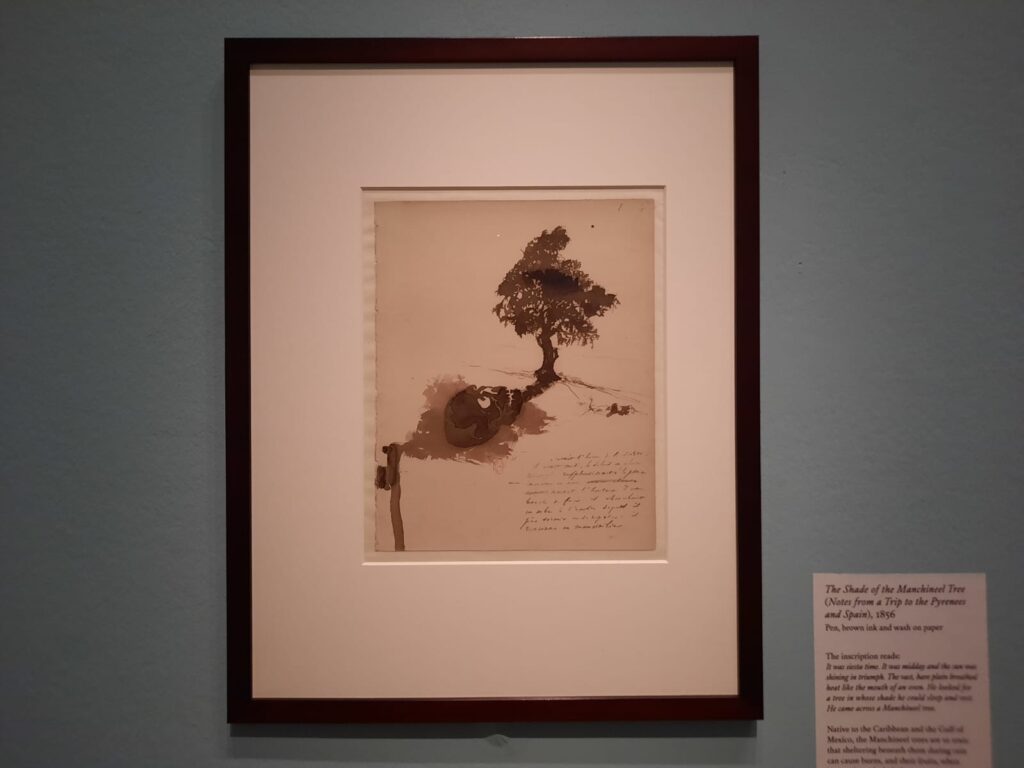

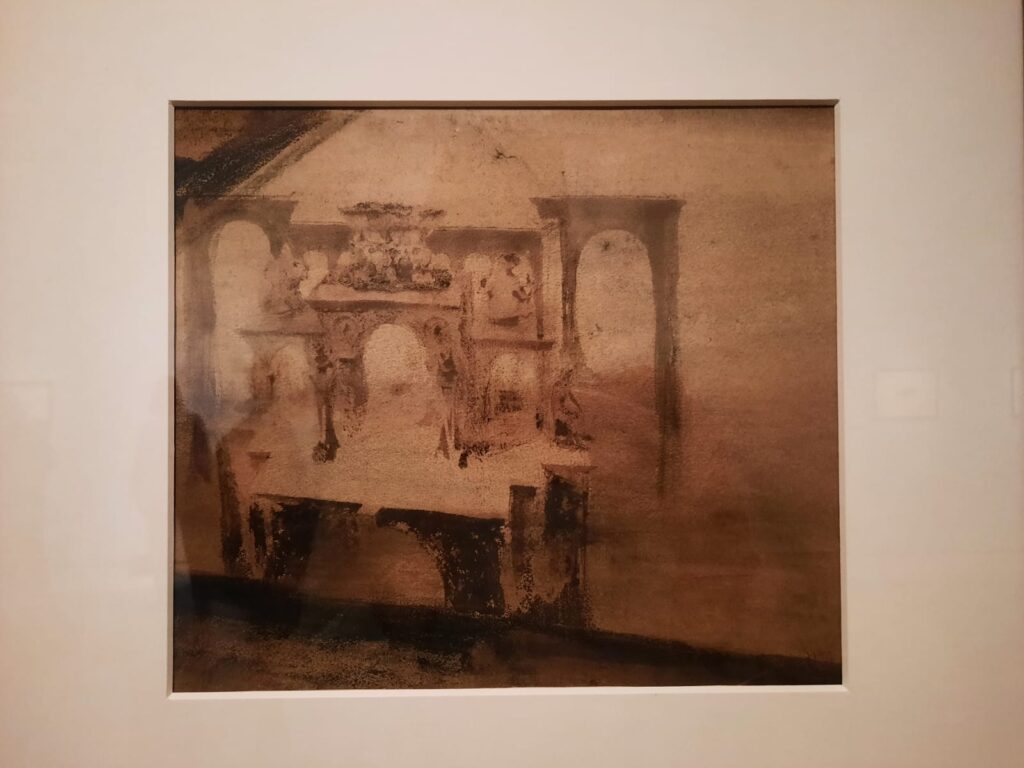
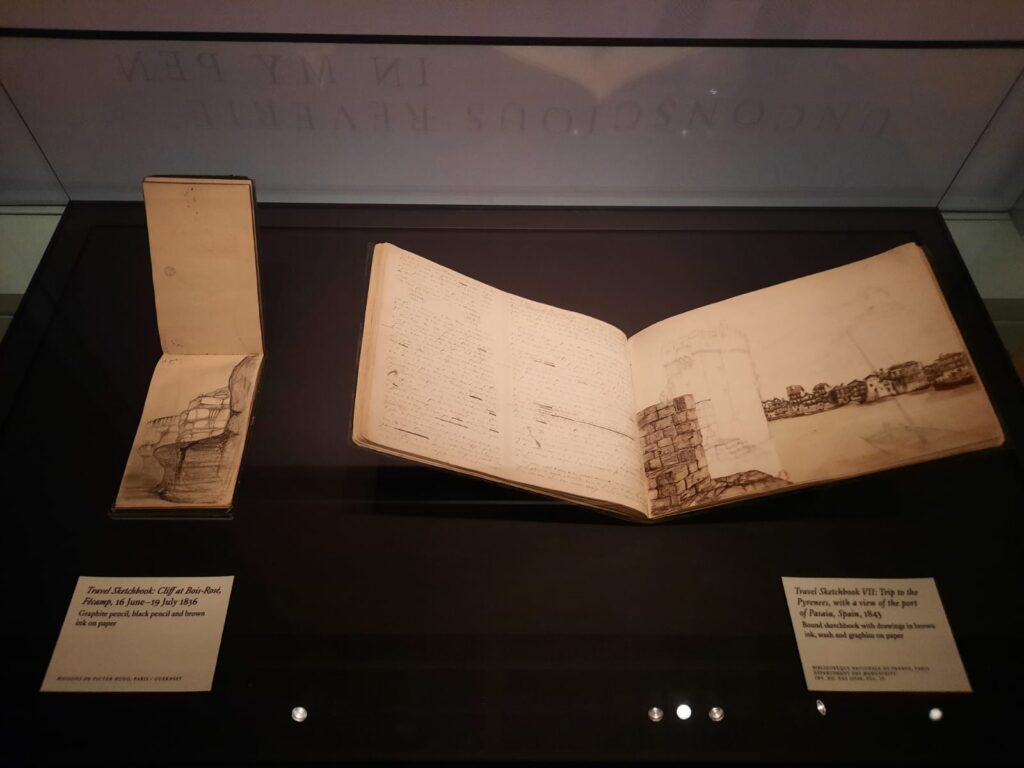
Astonishing Things: The Drawings of Victor Hugo
How much did I know about Victor Hugo before coming to this exhibition at the Royal Academy? Not much. Un petit peu. And that’s coming from someone who not only has a degree in French, but has seen the popular musicals of both Les Misérables and The Hunchback of Notre Dame! I jest, but only a little. I doubt the average exhibition-goer in London could name many more facts about Hugo than his authorship of those two tomes.
An interesting choice, therefore. Particularly when Hugo’s drawings are extremely fragile and don’t travel well, dictating both the choice of works on view, and their display. So why put this exhibition on? Reading the RA’s website, the rarity of their display seems to be at least part of the impetus for the exhibition in and of itself. Other than that, it mentions how drawings were a refuge and another poetic outlet for Hugo, and how they inspired poets and later artists. In fact, the exhibition title Astonishing Things comes from a description of Hugo’s drawings by Vincent Van Gogh.
It’s also organised in collaboration with Paris Musées – Maison de Victor Hugo and the Bibliothèque nationale de France. I understand the case for these institutions hosting the exhibition a little more than I do the Royal Academy. A house museum about Victor Hugo wanting to show another side of him? Sure. The French National Library showcasing rarely-seen works by a famous French literary figure? Yes, makes sense. An art-focused institution in London exhibiting drawings by a famous French literary figure? I’m less convinced, but tell me more.
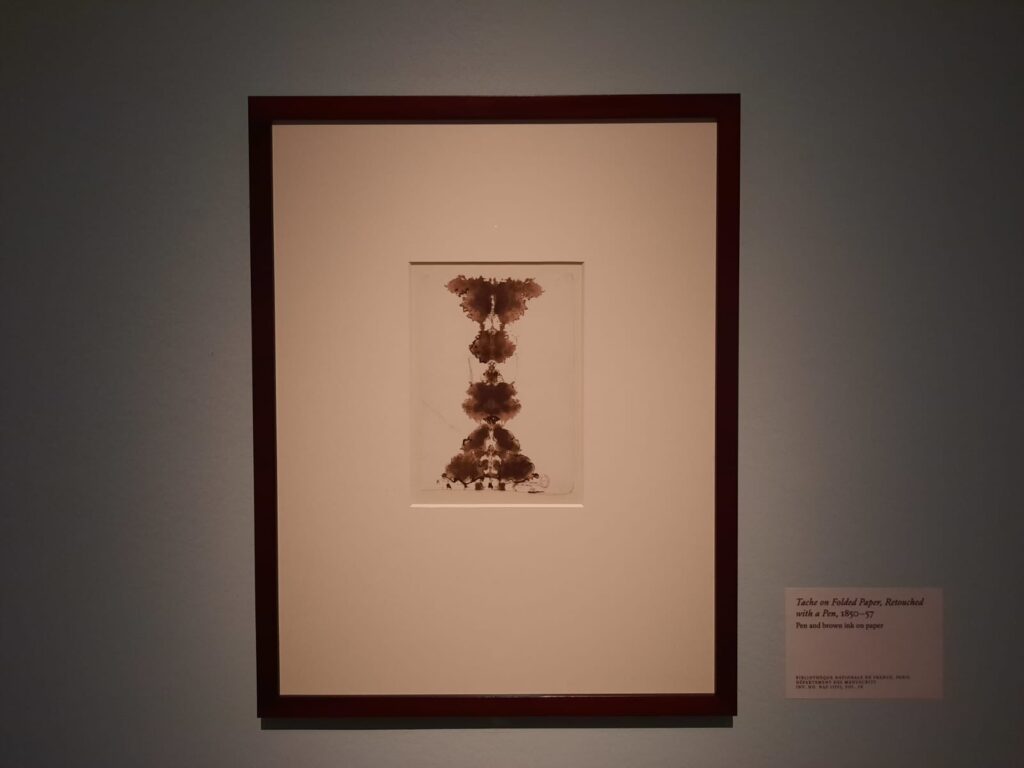
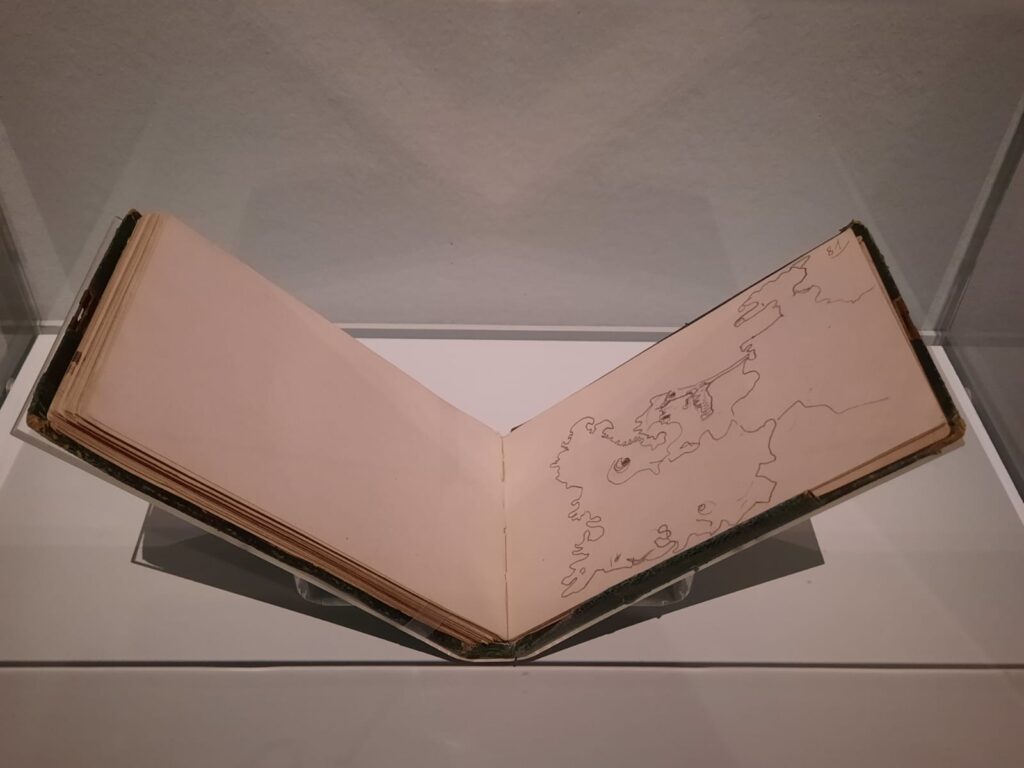
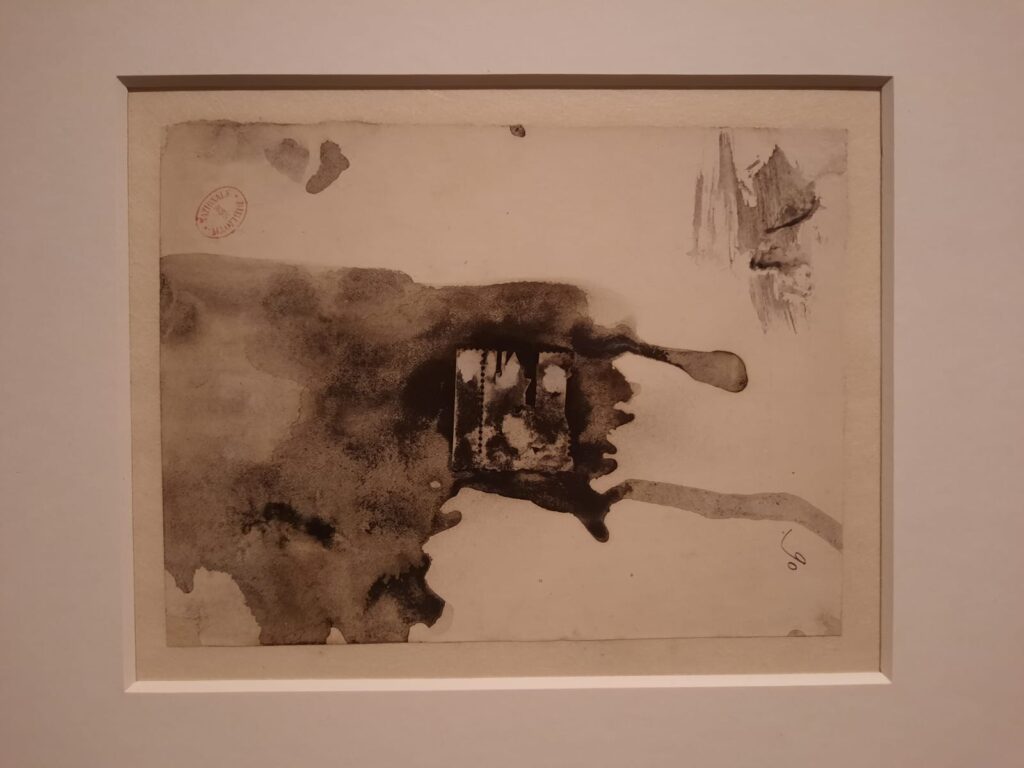
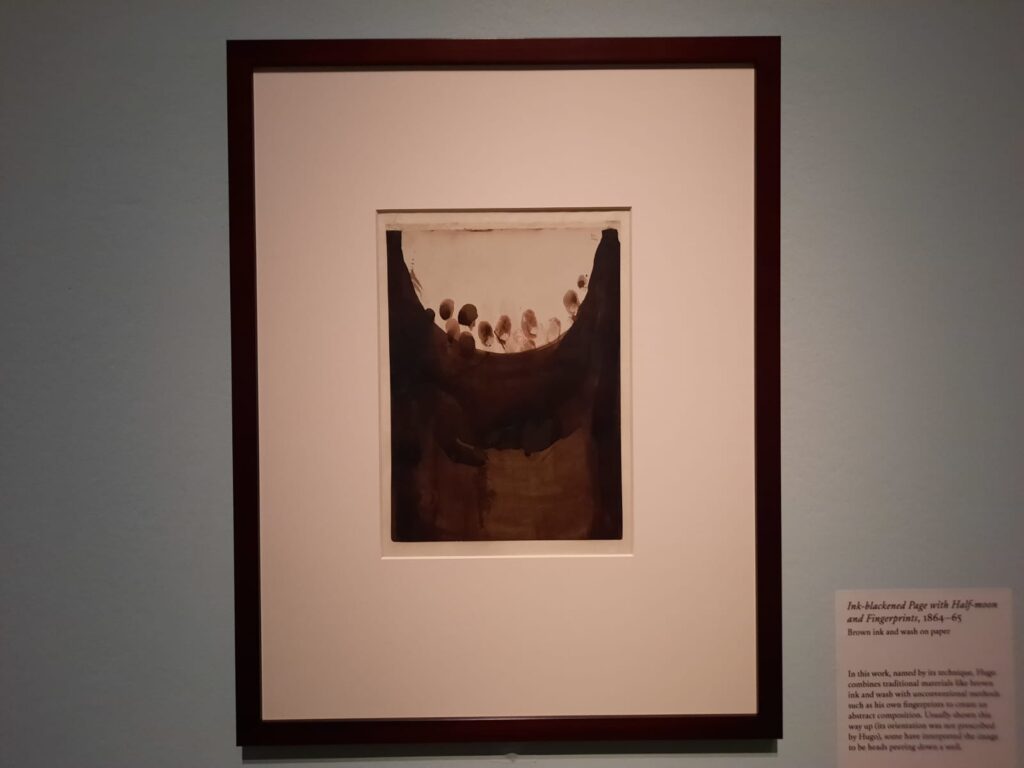
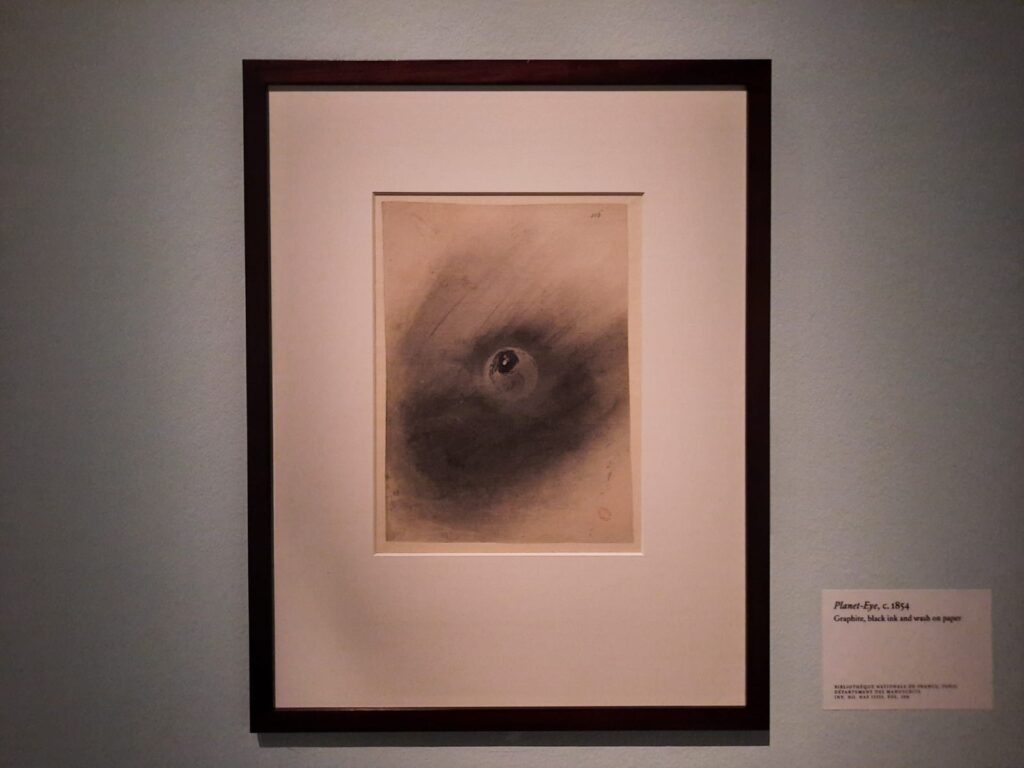
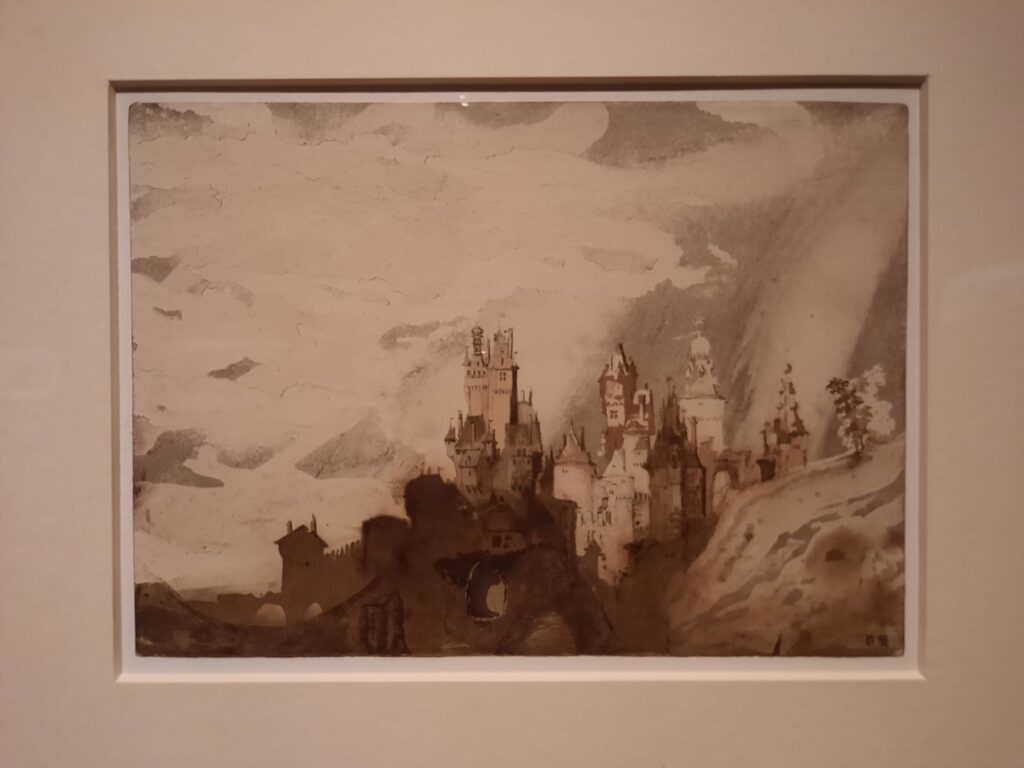
A Creative Outlet
So it was in this spirit of curiosity that I came to see the exhibition. It’s in the RA’s smaller upstairs exhibition space, which as we’ve discussed previously has held on to the Sackler name to date. This means roughly three rooms, a nice size to make an argument, go into depth a little, and then conclude.
The first thing I was struck by was the simultaneous variety and uniformity of the works on view. Most of them are brown ink on paper. Or possibly look brown to us now but were a different shade when first drawn? Not sure, but ink is sometimes fickle like that. But anyway, brown ink on paper as far as the eye can tell. With very occasional pops of colour which feel impactful because they’re so rare. But within that monochromatic approach, there is an interesting range of techniques. There are realistic sketches, and complete fantasies. Hugo printed with lace and other objects, used different objects as well to lay the ink down, used cutouts, and transformed random ink blots into curious scenes. The latter is perhaps a nod to his strong spiritualist bent, as is what looks like automatic writing/drawing in a few cases.
As such, these drawings really feel like a private creative outlet for someone known primarily as a writer. Many were produced during his time in exile in Guernsey: scenes of shipwrecks and sea creatures seem rife with anxiety commensurate with that experience. We can also learn about things close to Hugo’s heart by studying his drawings. For instance he documented places he visited in careful sketches, and sometimes came back to particular images (like Vianden in Luxembourg and its castle) in later years. His strong opposition to the death penalty also inspired him to produce drawings and written work alike. We see here a haunting image of a dead man on the gallows, entitled Ecce Lex, which was turned into an engraving.
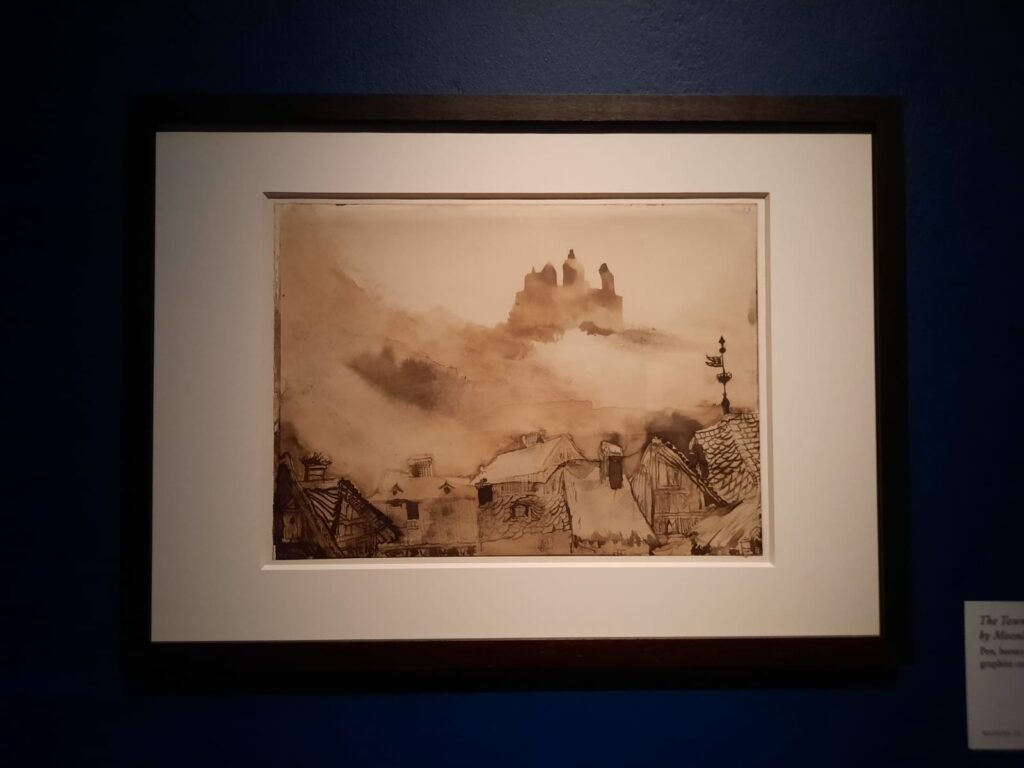
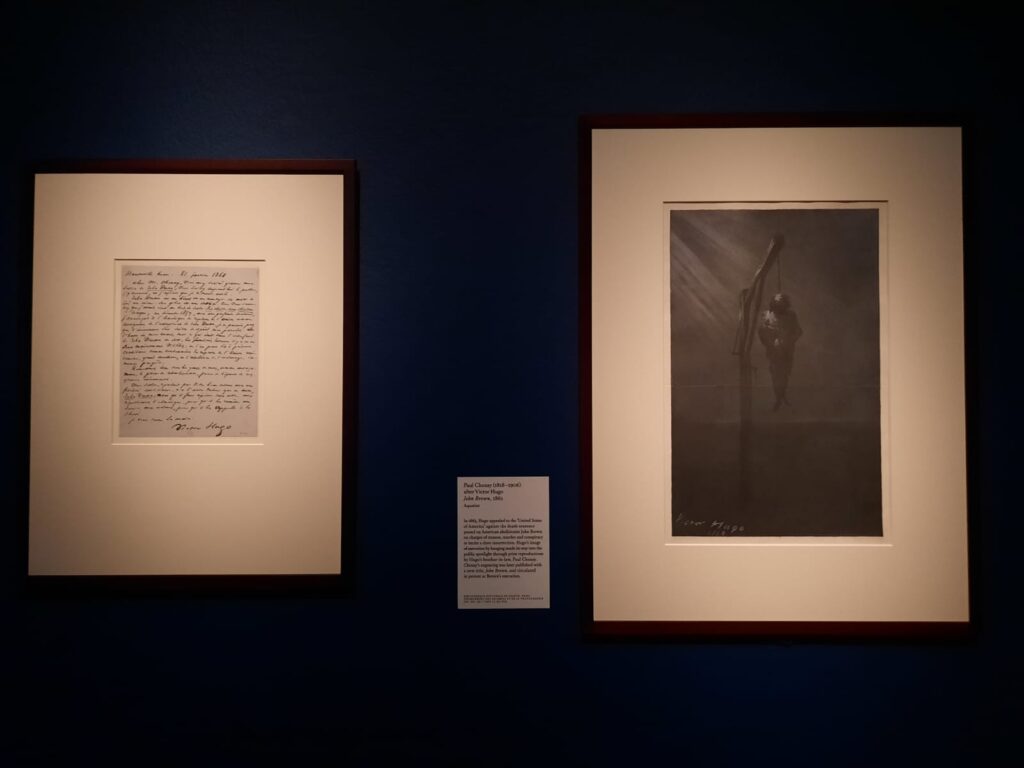
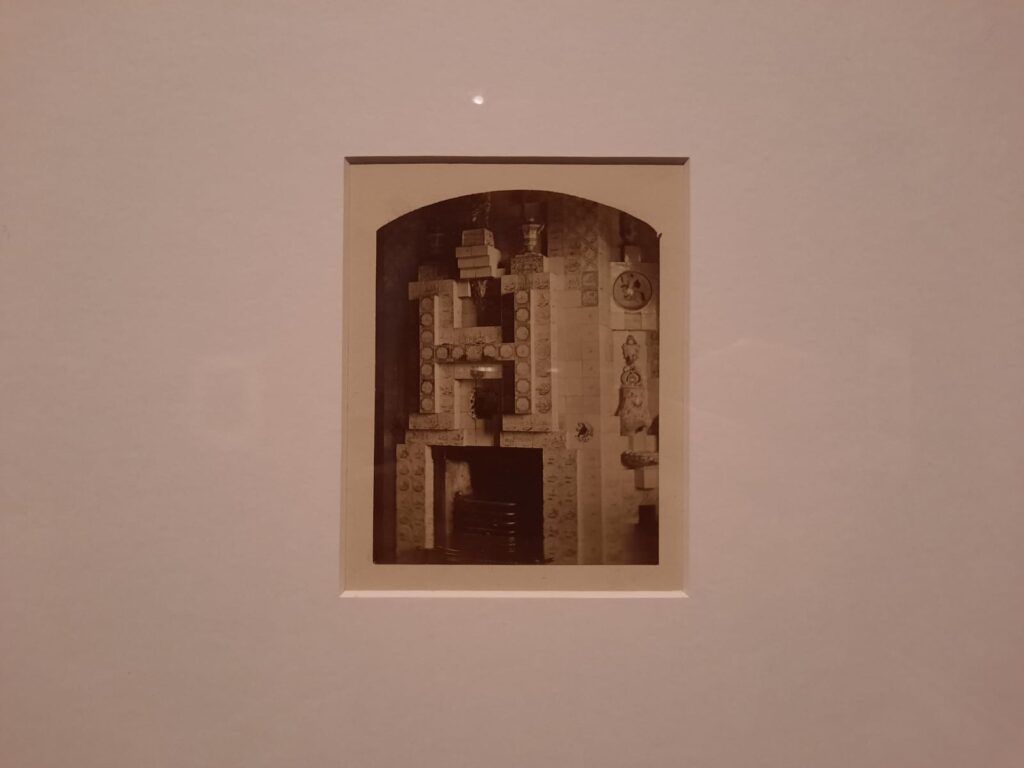
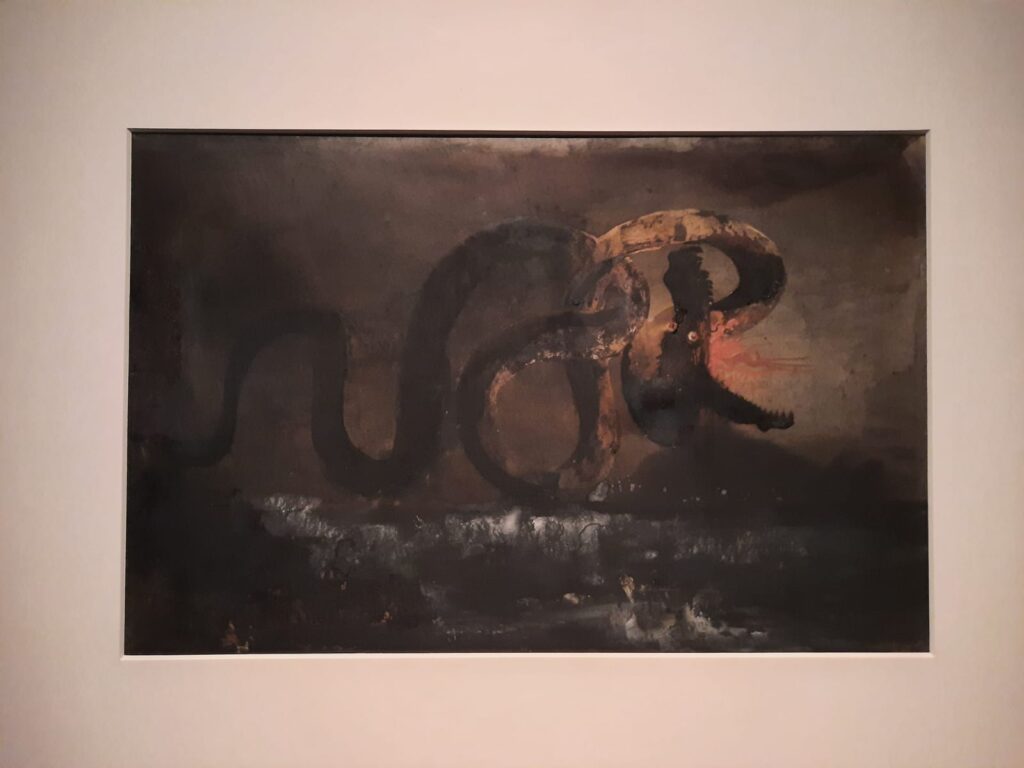
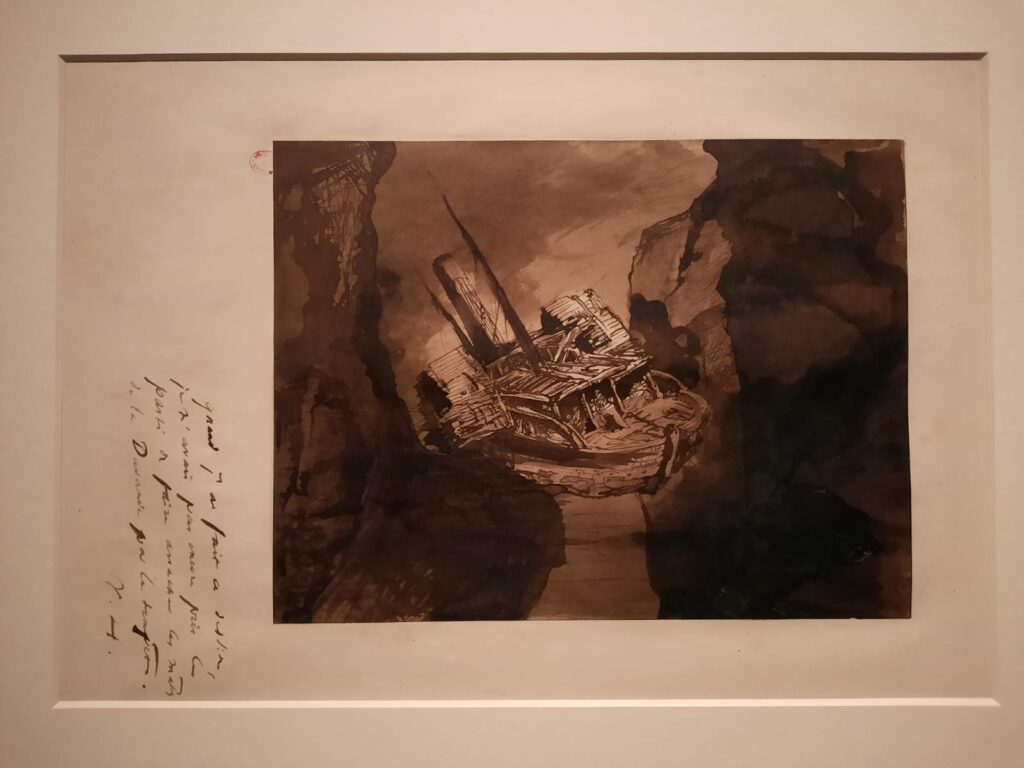
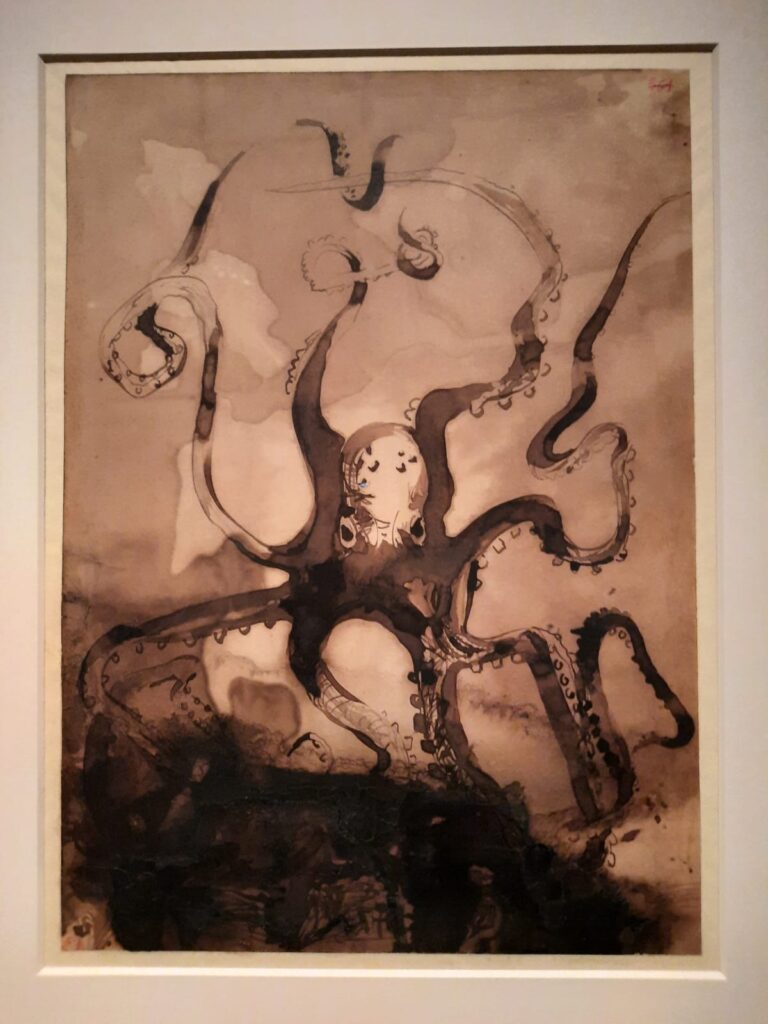
Astonishing Things?
But to come back to my first question: why put this exhibition on? If the drawings weren’t by Hugo but another individual, are they of a calibre that would warrant this attention? I don’t think so. They’re intriguing, and their creativity, away from any audience, led Hugo into interesting directions. You can see how later artists could have drawn inspiration from them, for either visual or written works. But they would probably only have been looking at them because Hugo was a public figure. To my mind Hugo is still a writer who also drew.
Do they tell us something about Hugo that we couldn’t get from reading his books? Yes, most definitely. They feel like a glimpse into an inner life. We can see a little about how he thought, what his interests were, his creative mind. And as I said, it’s possible to infer something about his emotional state during exile from his drawings. This is a very valid reason for an exhibition to exist: in this case it’s just the fact that it’s at the RA that threw me.
If you have a passing interest and are in the area, though, I do recommend a visit. The drawings demand very low light levels, but I quite like this. It makes for a dark and cosy atmosphere. The exhibition wasn’t too crowded when I visited, so I could take my time looking at the different works on view. And it’s well-structured, with thematic groupings also imparting biographical and other details.
How much do I know about Hugo now, then? I would say un peu, rather than un petit peu. But I am intrigued to know more: I might have to stop by that house museum in Paris, or seek out more information if I visit the Channel Islands. And in that sense: imparting knowledge and piquing curiosity, this exhibition has done its job well.
Salterton Arts Review’s rating: 3.5/5
Astonishing Things: The Drawings of Victor Hugo on until 29 June 2025
Trending
If you see this after your page is loaded completely, leafletJS files are missing.

